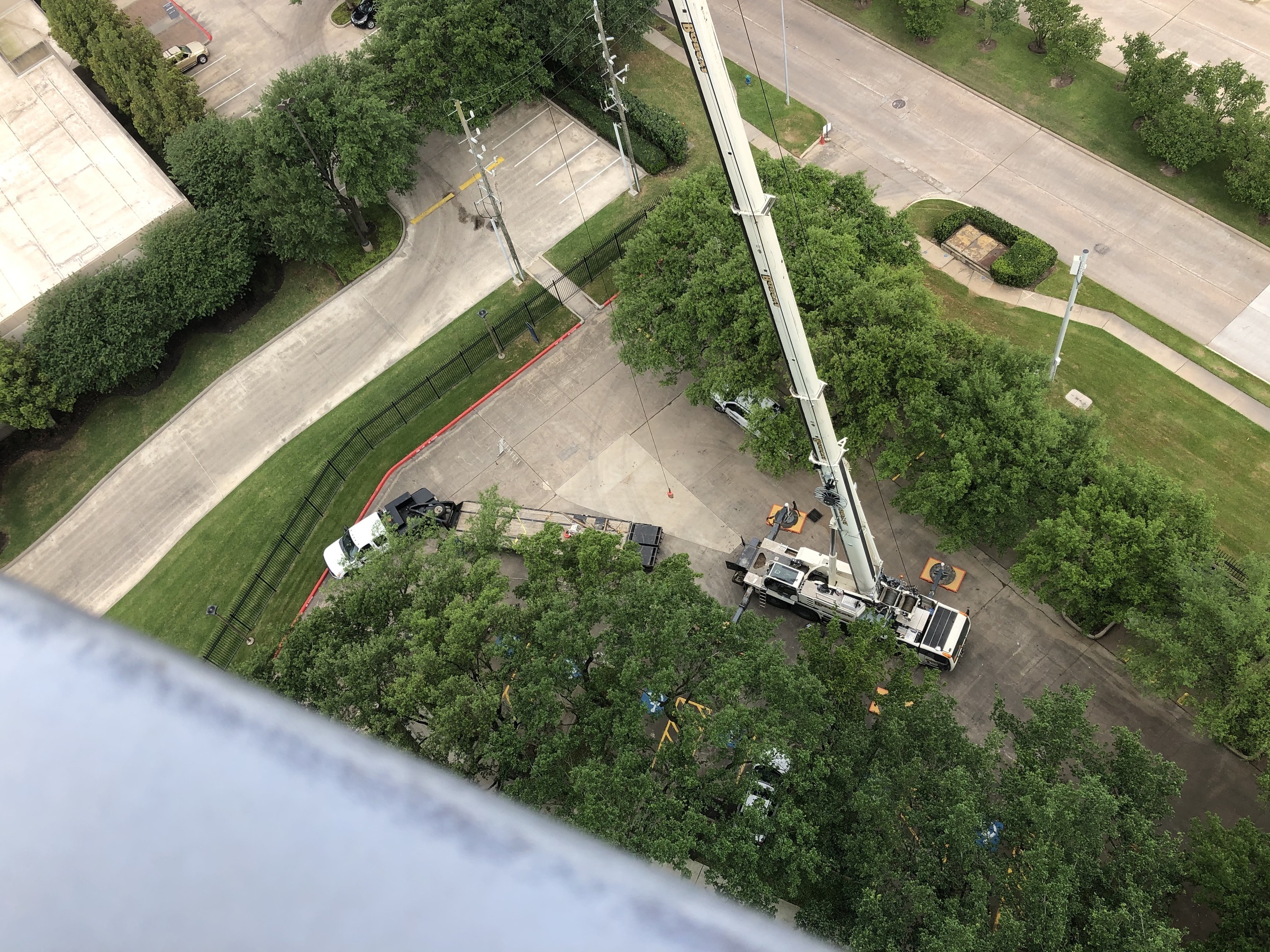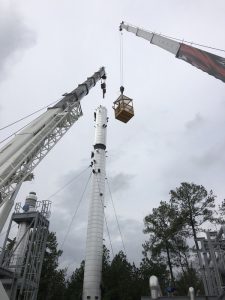
Efficiency in construction and agriculture often hinges on versatility, and one machine that embodies this principle is the telehandler. Known as a telescopic handler in the industry, this machine has transformed the way heavy loads are lifted, moved, and positioned across various sectors.
In this guide, Bobcat Contracting LLC, a crane rental company based in Texas, provides insights into telehandlers, covering their capabilities and why they've become indispensable tools on job sites.
What Exactly Is a Telehandler?
A telehandler, or telescopic handler, is a multi-functional piece of heavy machinery that merges the lifting power of a forklift with the extended reach of a crane. Its defining feature is a telescopic boom that can extend and retract, enabling superior vertical and horizontal reach. Telehandlers go by various names in the industry, such as telescopic forklifts, lulls, teleporters, reach forklifts, and zoom booms. These machines are now staples in construction, agriculture, waste management, and recycling operations.
The Components of a Telehandler
The core component of the machine is its telescopic boom, which is an extendable arm providing the telehandler with its reach and lifting capacity. Operators control the machine from a cab designed for optimal visibility. The chassis serves as the base and is often built for stability on rugged terrain. At the boom's end, there's an attachment point that allows for various tools to be installed. Larger models may also feature stabilizers to provide extra support during heavy lifting tasks.
Capabilities and Applications of Telehandlers
Telehandlers excel in a variety of roles:
Lifting and Transporting
These machines are adept at shifting heavy loads across construction sites and agricultural environments. They can handle:
- Pallets of materials
- Steel beams
- Concrete blocks
- Bricks and timber
- Earth and aggregates
- Waste materials
Accessing Heights and Distances
With their extendable booms, telehandlers can reach places that standard forklifts cannot. This makes them perfect for:
- Placing materials on upper building floors during construction
- Stacking hay bales in tall barns
- Loading and unloading trucks from one side
Rugged Terrain Performance
Telehandlers are built to function well on uneven ground. This makes them invaluable on:
- Unpaved construction sites
- Agricultural fields and farmyards
- Recycling centers and scrapyards
Versatility Through Attachments
One of the standout advantages of telehandlers is their adaptability through various attachments. Common attachments include:
- Fork carriages
- Buckets
- Crane jibs
- Work platforms
- Lifting hooks
This flexibility means a single machine can take on the roles of multiple pieces of equipment, conserving time and resources on job sites.
Sizes and Lifting Capacities
Telehandlers come in a variety of sizes to match different job demands:
- Super compact models: Ideal for indoor work or confined spaces.
- Compact telehandlers: Suitable for small construction sites or landscaping projects.
- Standard lift models: The backbone of most construction sites.
- High lift telehandlers: Reaching heights of up to 20 meters.
- Heavy load models: Capable of lifting up to 16,000 lbs.
When picking a telehandler, it's crucial to factor in both the weight of the loads you'll be handling and the height you need to achieve. Remember, the maximum lift capacity usually decreases as the boom extends.
Safety and Training Considerations
Operating a telehandler demands skill and proper training. Given their complexity and potential for accidents, safety must always be a priority. Before each session, operators should conduct routine equipment checks. It's vital to understand the telehandler's load capacity and avoid exceeding it. Awareness of how the load capacity changes with the boom's extension is critical for safe operation. Ground conditions and stability are equally important, as is maintaining clear visibility at all times. If visibility is obstructed, using spotters can enhance safety. Ultimately, thorough training and certification are not just beneficial but necessary for all operators.
Distinguishing Telehandlers from Forklifts
Although telehandlers and forklifts may appear similar initially, they cater to different purposes. Telehandlers offer enhanced reach and height capabilities and are better suited for rough terrain, making them ideal for outdoor work and large-scale construction projects. Their adaptability via multiple attachments is unmatched.
Forklifts, on the other hand, are more compact and agile in confined spaces, excelling in warehouse and indoor environments. They generally have a higher lifting capacity at full extension and are more fuel-efficient for consistent use in fixed locations.
Choosing the Right Telehandler
Selecting the right telehandler depends on several factors. Consider the maximum weight you need to lift, the highest point you need to reach, the type of terrain, the tasks and attachments needed, whether you're working indoors or outdoors, and the frequency and duration of use. Evaluating these elements ensures you choose a telehandler that meets your project's requirements efficiently and safely.
The Future of Telehandlers
As technology progresses, so does the telehandler. Innovations include electric and hybrid models for lower emissions, advanced safety features like object detection systems, and better telematics for fleet management and maintenance scheduling. Trends toward increased automation and remote operation promise to make telehandlers even more efficient, secure, and versatile in the future.
Contact Bobcat Contracting LLC for a Free Quote on Crane Rental in Texas!
For crane and telehandler rental services in Texas, Bobcat Contracting LLC is here to assist. Our modern crane fleet and experienced operators can handle projects of any scale. Contact us today for a free quote and let us help you elevate your project. With Bobcat Contracting LLC, you're teaming up with experts dedicated to your project's success.
Renewable Energy Advances with Cast Film Lines
As the energy industry leans more towards renewable resources, solar energy emerges as a prominent option. Here is where "New Energy Cast Film Lines" play a critical role. They produce the specialized films used in solar technology, which are key in tapping into the sun's power.
The Importance of Plastic Films in Solar Systems
Solar setups often depend on plastic films. These essential components are made using machinery like the "Solar Energy Cast Film Machine" and the "Photovoltaic Cast Film Machine." The films created have unique characteristics, allowing them to turn solar energy into electrical power.
Let's take a closer look at two main film types
Photovoltaic Films: Found in the heart of solar cells, these films, primarily silicon-based, absorb sunlight and generate power thanks to the photovoltaic effect.
Backsheet Films: Acting as a shield, these films are placed on the rear of solar panels to protect against weathering, helping to ensure the panels' efficacy over time.
The Process Behind New Energy Cast Film Lines
Machines involved in this process, which include the indispensable "Plastic Film Perforation Machine," perform a procedure known as cast film extrusion. This involves melting plastic, shaping it into sheets that are then cooled, set, and rolled. These machines are carefully calibrated to output films with precise attributes suited to the solar energy industry.
Choosing Suitable Cast Film Line Equipment
Selecting a "New Energy Cast Film Line" requires a few considerations:
Material Choice: The type of plastic you use has implications for the film's overall performance and lifespan.
Quality of Film: Details like film thickness, light permeability, and strength need to be in tune with the intended solar applications.
Custom Features: Features such as film perforations can be added to enhance the functionality of the films, such as enabling the breathability of backsheet films to reduce moisture buildup.
Embracing a Green Energy Future
With "New Energy Cast Film Lines," we're not just investing in equipment. We're taking strides towards a greener, more sustainable energy landscape by producing essential components for solar technology, furthering the progress in the realm of renewable energy.
New Energy Cast Film Line,Solar Energy Cast Film Machine,Photovoltaic Cast Film Machine,Plastic Film Perforation Machine
Baijia Mechanical Equipment (Huizhou) Co., Ltd. , https://www.castfilmmachine.com
